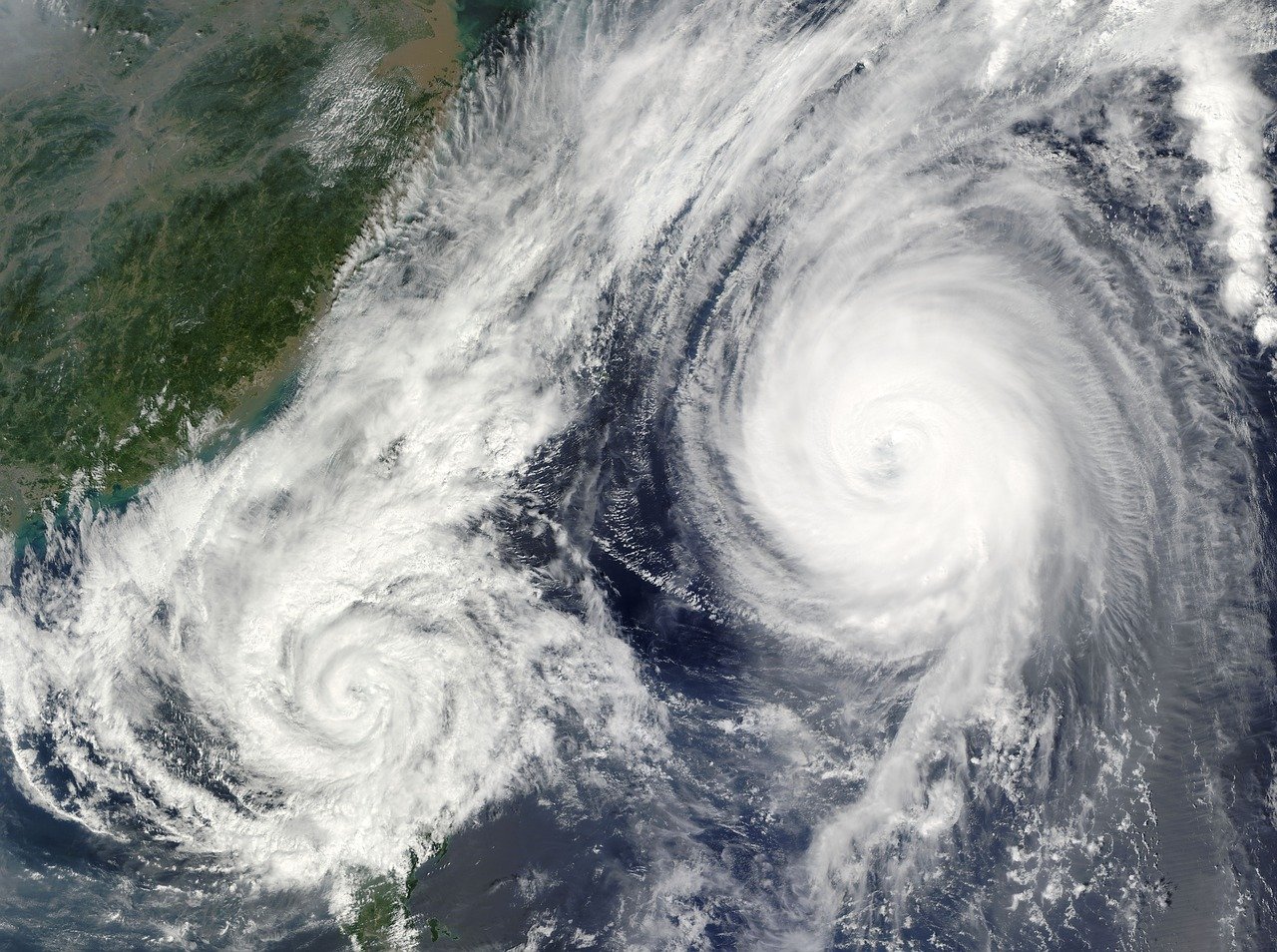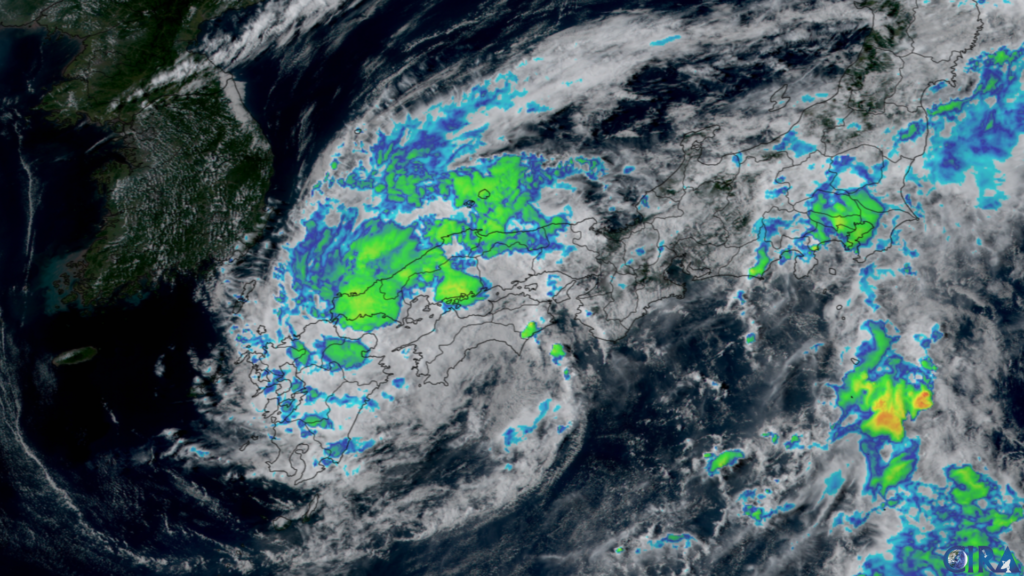| Climate change increased the intensity of Typhoon Shanshan by 7.5% and made it 26% more likely to occur. Scientists think that Shanshan might rank among the most powerful storms ever to impact the region. |
In the heart of the Pacific, nature’s fury was unleashed as Typhoon Shanshan roared towards Japan. With winds that could bend steel and rains that threatened to submerge cities, Shanshan was not just a meteorological phenomenon but a grim reminder of our warming planet’s volatile future. As Typhoon Shanshan made landfall in August 2024, it became nature’s another stark warning about the consequences of our changing climate.
This comprehensive article delves into the environmental narrative that fueled Typhoon Shanshan, examining its impact on Japan and the broader implications for a world grappling with climate change.
Background Information on Typhoons
Typhoons are like nature’s mighty giants, gathering strength from the warm waters of the ocean. They typically form in the tropics, where the sun heats the sea and creates the perfect conditions for these powerful storms to develop.
Japan, located right in the path of these tropical tempests in the Pacific, experiences them regularly. Over the years, each typhoon has added a new story to Japan’s rich history of dealing with the forces of nature.

Typhoon Shanshan: The Event
Japan Typhoon Shanshan started quietly, like a gentle breeze over the Pacific Ocean, but quickly transformed into a roaring storm as it made its way toward Japan. The Japan Meteorological Agency closely tracked its progress, and by August 2024, Shanshan was crashing into Japan’s shores with full force.
The impact was both immediate and devastating, especially in Kyushu, where the powerful winds and heavy rains hit hardest. The real story of Typhoon Shanshan can be seen in the faces of those who lived through it.
Over four million people were advised to evacuate, with authorities issuing the highest level of alerts in certain regions. Despite this, only about 30,000 people, primarily in Kyushu, had evacuated initially, according to disaster management minister Yoshifumi Matsumura.
In Kyushu, approximately 250,000 households across seven prefectures were without power, as reported by Kyushu Electric Power Co.
Residents of Ninomiya, a town near Tokyo, were urged to relocate to higher ground due to river flooding.
The Japanese Meteorological Agency reported record rainfall in parts of Kyushu, including Misato town, which received 791.5 millimeters (31 inches) of rain in just 48 hours.

Japan Braces for Impact
As Typhoon Shanshan neared, Japan’s renowned efficiency sprang into action. Bullet trains stopped running, airports went quiet, and factories closed. Millions of people followed evacuation orders, leading to a massive movement away from coastal areas. This was a well-coordinated effort, the result of many years of experience with natural disasters.
However, even Japan’s top-notch preparedness was stretched thin. Emergency services worked tirelessly, day and night, to protect people and reduce the damage as Shanshan’s powerful storm continued to batter the country.
Climate Change Connection
Now, here’s where things get really interesting – and frankly, a bit scary.
Scientists have been warning us for years that climate change would lead to more powerful storms. Typhoon Shanshan was like their predictions come to life.
Remember those unusually warm ocean temperatures we mentioned? That’s climate change in action.
Warmer waters act like rocket fuel for typhoons, allowing them to intensify rapidly and hold more moisture. In fact, for every 1°C (1.8°F) increase in ocean temperature, the atmosphere can hold about 7% more water vapor. More water vapor means heavier rains and more devastating floods.
But it’s not just about intensity. Shanshan’s sluggish pace over Japan is another climate change red flag.
Research suggests that as our planet warms, these storms are moving more slowly, allowing them to dump more rain in one area. It’s like a boxer holding their opponent against the ropes – the blows just keep coming.
The Aftermath and Broader Implications
As the skies cleared and Shanshan moved on, the true scale of its impact became apparent. The economic toll was staggering – billions in damage to agriculture, manufacturing, and infrastructure. But the human cost was even greater. Communities were left reeling, grappling with loss and the daunting task of rebuilding.
Environmentally, Shanshan left its mark too. Coastal erosion, contaminated water supplies, and damaged ecosystems will take years to recover. It’s a stark reminder of how interconnected our world is – what happens to our climate affects everything from the fish in our oceans to the roofs over our heads.
Typhoon Shanshan wasn’t just a Japanese disaster – it was a global wake-up call. As we watch Japan rebuild, we must ask ourselves: how many more Shanshans can our world endure? The time for half-measures and empty promises is long gone. We need bold, decisive action to combat climate change.
From investing in renewable energy to reimagining our cities for resilience, every step counts. The Paris Agreement laid out a roadmap, but it’s up to all of us – governments, businesses, and individuals – to follow it. We must reduce our carbon footprints, support sustainable practices, and demand action from our leaders.

Bottomline
As one of the most powerful typhoons to strike the country in decades, it left hundreds of thousands of homes without electricity. Authorities are now concerned about the possibility of floods and landslides.
Shanshan’s clouds left behind more than just debris. They left us with a choice. We can continue on our current path, facing ever more powerful storms and unpredictable weather. Or we can take this as the final warning it is and change course.
Typhoon Shanshan’s legacy shouldn’t just be one of destruction. Let it be the catalyst that spurs us into action, the moment we decided to fight for our planet’s future.
Because the next Shanshan is out there, brewing in warming waters.
The question is: will we be ready?
- https://www.jma.go.jp/bosai/#lang=en&pattern=default
- https://www.dw.com/en/japan-typhoon-shanshan-brings-heavy-rains-halts-transport/a-70086764
- https://www.japantimes.co.jp/environment/2024/08/30/climate-change/typhoon-shanshan-climate-change/
- Trenberth, K. E., Dai, A., Rasmussen, R. M., & Parsons, D. B. (2003). The Changing Character of Precipitation. Bulletin of the American Meteorological Society, 84(9), 1205–1217.











Thanks for sharing. I read many of your blog posts, cool, your blog is very good.